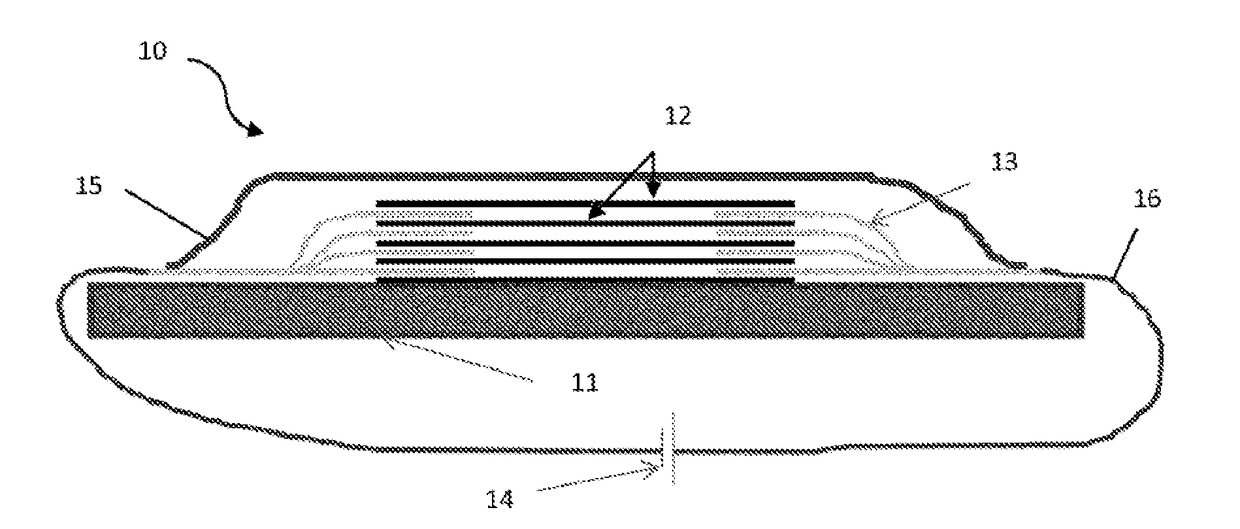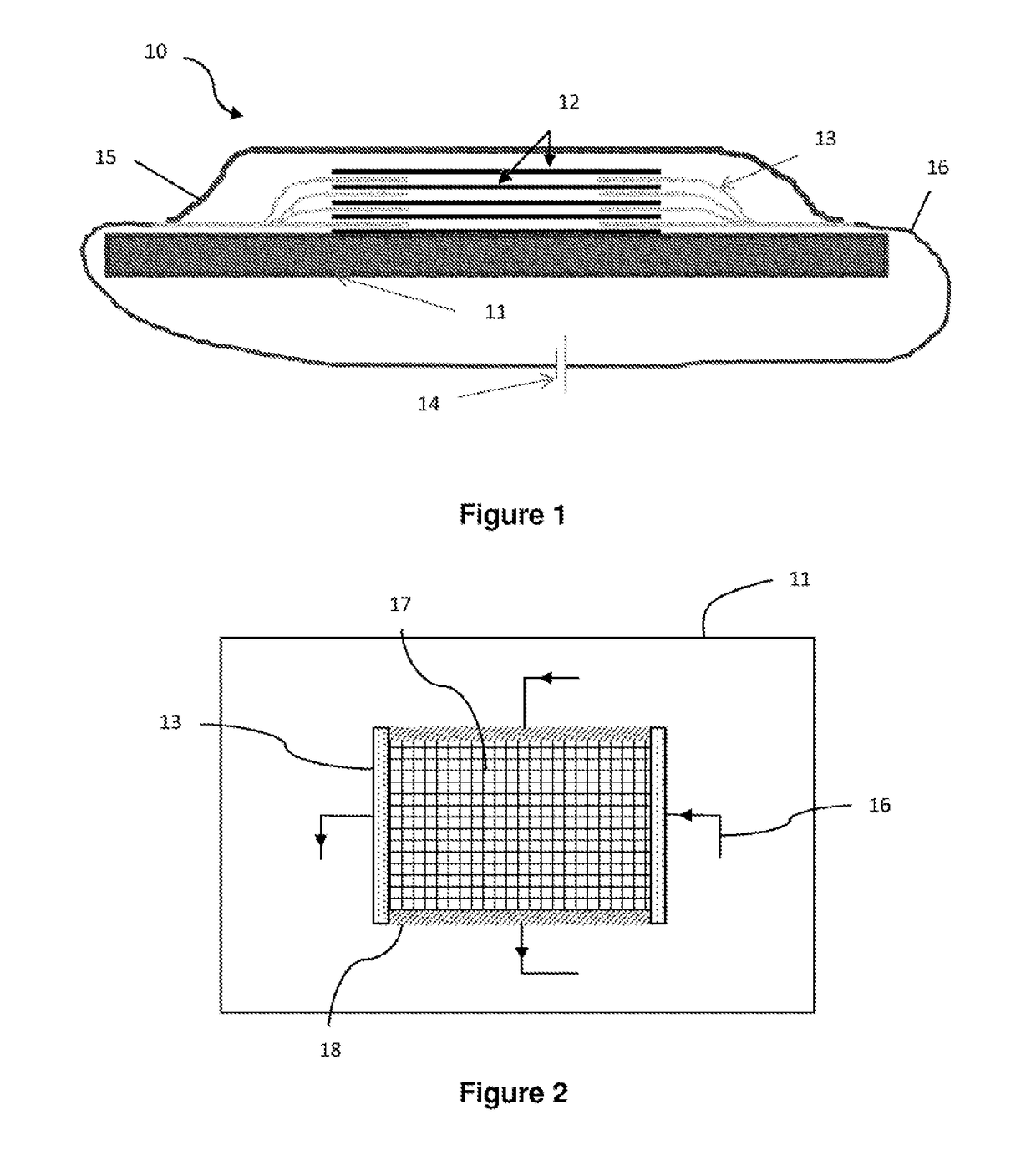Process and installation for producing a composite material part
- Summary
- Abstract
- Description
- Claims
- Application Information
AI Technical Summary
Benefits of technology
Problems solved by technology
Method used
Image
Examples
Embodiment Construction
[0059]First of all, it is noted that the drawings are not to scale.
[0060]FIG. 1 schematically represents a cross-sectional view and a face view of an installation 10 for producing a composite material part according to a particular aspect of the presently disclosed embodiment.
[0061]This part is produced here by stacking on a flat-shaped half-mold 11 plies 12 of fibers pre-impregnated with resin. Of course, this tool 11 could exhibit a shape that is not flat, such as a convex shape, depending on the final shape to be conferred to said part. This half-mold 11 is in this case produced from an electrically insulating material such as a glass-fiber-based composite material.
[0062]Each ply 12 is in this case formed by unidirectional fibers that are continuous and electrically conducting, such as carbon fibers, these plies being deposited for example using a drape-forming machine (not represented).
[0063]Placed between two successive plies 12 of the stack thus produced are two metal foils 13...
PUM
| Property | Measurement | Unit |
|---|---|---|
| Temperature | aaaaa | aaaaa |
| Pressure | aaaaa | aaaaa |
| Electrical conductivity | aaaaa | aaaaa |
Abstract
Description
Claims
Application Information
 Login to View More
Login to View More - R&D
- Intellectual Property
- Life Sciences
- Materials
- Tech Scout
- Unparalleled Data Quality
- Higher Quality Content
- 60% Fewer Hallucinations
Browse by: Latest US Patents, China's latest patents, Technical Efficacy Thesaurus, Application Domain, Technology Topic, Popular Technical Reports.
© 2025 PatSnap. All rights reserved.Legal|Privacy policy|Modern Slavery Act Transparency Statement|Sitemap|About US| Contact US: help@patsnap.com


